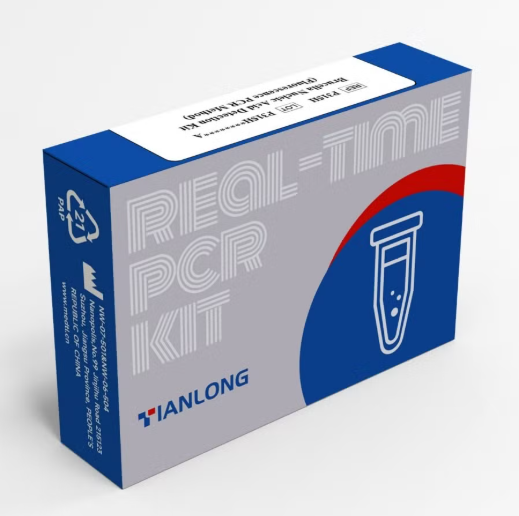Handheld Device for Rapid Avian Flu Detection in Humans Approved
In a groundbreaking development in the field of medical diagnostics, a new handheld device has been approved for rapid and accurate detection of Avian Influenza, commonly known as bird flu, in humans. This approval marks a significant step forward in combating potential outbreaks and safeguarding public health.
Understanding Avian Flu and Its Impact
Avian Influenza is a viral infection that predominantly affects birds, but certain strains have recently made the leap to humans, causing serious health concerns. Key aspects include:
- Transmission: The virus can spread from birds to humans typically through direct or indirect contact with infected birds or contaminated surfaces.
- Symptoms in Humans: Fever, cough, sore throat, and muscle aches, which can progress to severe respiratory illnesses or even death.
- Global Impact: Outbreaks in poultry have led to significant economic losses and pose a risk of human pandemics.
Given the potential severity of the illness, early detection and rapid response are crucial strategies in preventing widespread transmission.
The Game-Changing Device
The newly approved device is a compact and user-friendly tool specifically designed to facilitate the quick detection of Avian Flu. Here are some core features and benefits:
User-Friendly Design
The equipment is engineered to be intuitive, allowing healthcare professionals and potentially even non-experts to operate it effectively with basic training. Its portable nature enables deployment in diverse settings, from hospitals to remote vaccination camps.
Speed and Accuracy
- Rapid Results: Capable of delivering results in less than 30 minutes, this device significantly reduces the waiting time associated with traditional testing methods.
- High Accuracy: Utilizes advanced biomarker detection technology that ensures high reliability and minimizes false results.
Integration with Existing Systems
The device is designed to seamlessly integrate with existing health information systems, allowing for real-time reporting and data analysis. This capability:
- Enhances monitoring efforts.
- Supports prompt decision-making.
- Facilitates the coordination of response actions during potential outbreaks.
Implications for Public Health
The approval of this device is not just a technological advancement but a crucial tool that can revolutionize how public health entities manage Avian Flu risks.
Early Detection and Containment
By enabling swift identification of infections, the device helps:
- Prevent Transmission: Early detection allows for timely isolation and treatment of affected individuals.
- Control Spread: Swift action can help contain potential outbreaks, limiting the spread both geographically and within populations.
Resource Optimization
The deployment of this device can lead to more efficient use of healthcare resources by:
- Reducing unnecessary hospitalizations.
- Allowing for focused attention on truly infected cases.
- Streamlining testing processes in resource-constrained environments.
How It Differs from Traditional Methods
Traditional diagnostic methods for Avian Flu involve complex laboratory procedures that are time-consuming and necessitate specialized laboratory infrastructure, which may not always be accessible. In contrast, this handheld device offers:
- Mobility and Flexibility: Bringing testing to the field rather than relying solely on centralized labs.
- Point-of-Care Testing: Empowering local health providers to make informed decisions without delay.
Potential Challenges and Considerations
While this device holds great promise, various considerations need to be addressed to maximize its effectiveness.
Training and Implementation
Training is essential to ensure that end-users are proficient in using the device. This can include:
- Developing standardized training modules.
- Providing ongoing support to address any operational issues.
Ensuring Accessibility and Affordability
Efforts must be made to ensure that this life-saving technology is accessible, particularly in under-resourced areas where Avian Flu might have devastating effects. Stakeholders must work to make the device:
- Affordable: Subsidies or pricing strategies to reduce costs.
- Widely Available: Ensuring distribution channels that reach all necessary regions globally.
Collaborative Efforts
The effective deployment of this device calls for collaboration among:
- Health Agencies: Both local and international institutions.
- Government Bodies: Ensuring policy and regulatory support.
- Nonprofit Organizations: Facilitating training and deployment in underserved areas.
Looking Ahead
The approval and upcoming distribution of this handheld device underscore the relentless drive towards innovation in public health. While Avian Flu remains a persistent threat, technologies like these allow us to take tangible steps towards mitigating the risks it poses.
Future Innovations
As technology progresses, further refinements and advancements in diagnostic tools can be expected, paving the way for even more effective epidemic and pandemic management.
Strengthening Global Health Security
In the face of a rapidly changing global health landscape, tools such as this device play a pivotal role in enhancing our abilities to respond to infectious disease threats, ensuring a safer and healthier world for all.









